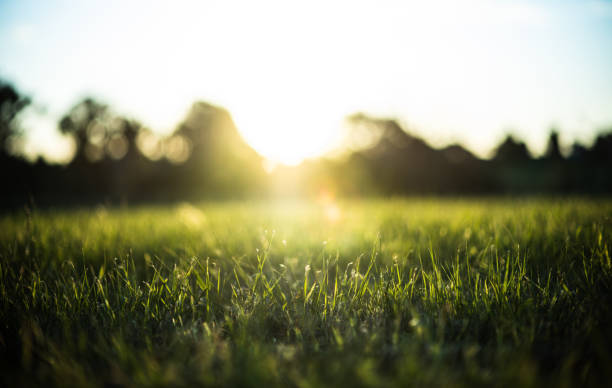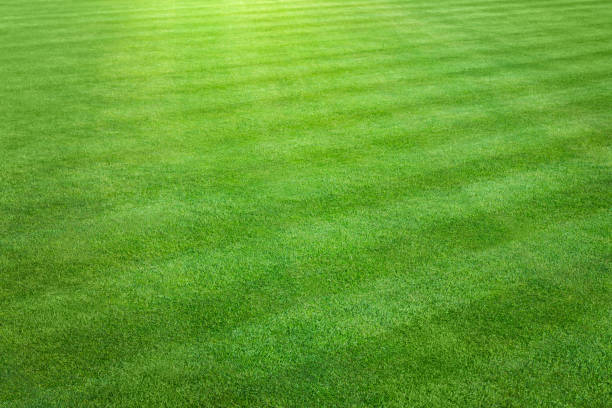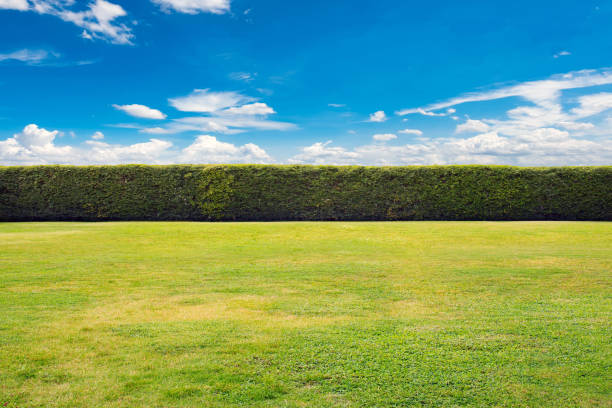
A lush, healthy lawn is every homeowner’s dream. It not only adds to the aesthetic appeal of your property but also provides a welcoming space for outdoor activities and relaxation. One often-overlooked aspect of lawn maintenance is aeration—a simple process that can bring remarkable benefits to your green haven. In this comprehensive guide, we’ll delve into the world of lawn aeration, uncover its surprising advantages, and provide tips to help you achieve the perfect lawn.
Understanding Lawn Aeration
Understanding lawn aeration is key to unlocking the full potential of your green space. Aeration is a process that involves creating small holes in the soil to facilitate better air, water, and nutrient penetration to the grassroots. This ultimately promotes stronger, deeper root growth and a more resilient, healthier lawn.
Various aeration tools and techniques exist, including spike and plug aerators, each with its unique advantages. Knowing when to aerate your lawn based on the type of grass you have and the optimal timing for its growth ensures maximum benefits. By grasping the ins and outs of lawn aeration, you’ll be well-equipped to maintain a thriving, lush lawn that becomes the envy of your neighborhood.
What is Lawn Aeration?
Lawn aeration is a process that involves creating small holes in the soil to allow air, water, and nutrients to penetrate the grass roots more effectively. This helps the roots grow deeper, resulting in a stronger, more vigorous lawn.
Types of Aeration Tools and Techniques

There are two main types of lawn aeration tools: spike aerators and plug (or core) aerators.
- Spike Aerators: These tools use solid, wedge-shaped spikes to create holes in the soil. They can be manual, like a handheld aerator, or motorized, such as a tow-behind aerator.
- Plug Aerators: These devices remove small plugs or cores of soil and thatch, leaving behind holes. They can be manual, like a step-on aerator, or motorized, such as a walk-behind aerator.
While both types can be effective, plug aerators are generally considered more beneficial, as they remove soil cores rather than simply compacting the soil further.
Optimal Timing for Lawn Aeration
The best time to aerate your lawn depends on the type of grass you have:
- Cool-season grasses (e.g., Kentucky bluegrass, tall fescue, perennial ryegrass) should be aerated during early spring or fall when they’re actively growing.
- Warm-season grasses (e.g., Bermuda, Zoysia, St. Augustine) should be aerated in late spring or early summer when they’re in their peak growth period.
It’s also important to aerate your lawn when the soil is moist but not overly wet, as this will make it easier for the aerator to penetrate the soil effectively.
Key Benefits of Lawn Aeration

Enhanced Oxygen Exchange
Aerating your lawn allows oxygen to reach the grass roots more effectively, promoting healthier and more robust growth. Oxygen is essential for root respiration, which is necessary for the grass to absorb nutrients and water.
Improved Water Absorption
A well-aerated lawn ensures that water can penetrate deeper into the soil, reducing runoff and promoting deeper root growth. This not only helps your lawn withstand drought conditions better but also minimizes water wastage.
Boosted Nutrient Uptake
By creating channels for air, water, and nutrients to reach the grassroots, aeration enhances the absorption of essential nutrients such as nitrogen, phosphorus, and potassium. This results in a healthier, more vibrant lawn.
Encouragement of Root Growth
Aeration stimulates root growth by providing more room for roots to expand and breathe. As roots grow deeper, they become more resilient to environmental stressors and better equipped to access the nutrients and water they need to thrive.
Thatch Reduction
Thatch is a layer of dead and living organic matter that accumulates between the grass blades and the soil. While a thin layer of thatch can be beneficial, the excessive buildup can lead to problems like reduced water absorption and increased disease susceptibility. Aeration helps break up thatch
and improve the overall health of your lawn by allowing water, air, and nutrients to reach the soil more effectively.
Alleviation of Soil Compaction
Soil compaction occurs when the soil particles become tightly packed together, reducing the space for air and water to circulate. This can lead to poor root growth and an overall decline in lawn health. Aeration helps alleviate compaction by loosening the soil and allowing the roots to grow more freely.
Better Stress Resistance
A well-aerated lawn with strong, deep roots is better equipped to handle environmental stressors such as heat, drought, and heavy foot traffic. This means your lawn will be more resilient and better able to bounce back from adverse conditions.
Signs Your Lawn Needs Aeration

If you’re unsure whether your lawn needs aeration, look out for the following signs:
- Compacted Soil: If your soil is hard and difficult to penetrate, it may be compacted and in need of aeration.
- Excessive Thatch Buildup: If the thatch layer on your lawn is more than half an inch thick, aeration can help break it up and promote healthier growth.
- Poor Water Drainage: If water tends to pool on the surface of your lawn or run off instead of soaking in, aeration can improve water absorption.
- Weak or Uneven Grass Growth: If your lawn has areas of weak or patchy growth, aeration can help stimulate more uniform growth.
- Heavy Foot Traffic: If your lawn experiences frequent foot traffic, aeration can help alleviate compaction and promote healthier growth.
Lawn Aeration Best Practices
Preparing Your Lawn for Aeration
Before aerating your lawn, follow these preparation steps:
- Mow your lawn to a slightly lower height than usual, but avoid scalping it.
- Water your lawn thoroughly a day or two before aeration to ensure the soil is moist but not overly wet.
- Mark any sprinkler heads or other buried objects to avoid damaging them during the aeration process.
Choosing the Right Aeration Method
As mentioned earlier, plug aerators are generally more effective than spike aerators. When selecting an aerator, consider factors such as the size of your lawn, the type of soil, and your budget. If you have a small lawn, a manual plug aerator may be sufficient. For larger lawns, you may want to invest in a motorized aerator or rent one from a local garden center.
Post-Aeration Lawn Care Tips
After aerating your lawn, follow these tips to maximize the benefits:
- Leave the soil plugs on the lawn, as they will break down and return nutrients to the soil.
- Water your lawn regularly to encourage deep root growth and help the soil settle.
- Apply a slow-release, granular fertilizer to provide essential nutrients and promote healthy growth.
- If necessary, overseed your lawn with a compatible grass seed to fill in any bare spots and improve overall density.
Hiring a Professional vs. DIY Aeration
When it comes to lawn aeration, you have the option of hiring a professional service or tackling the job yourself. Here are the pros and cons of each approach:
Pros and Cons of Hiring a Professional
Pros:
- Expertise and experience in lawn care
- Access to professional-grade equipment
- Saves time and effort
Cons:
- Can be more expensive than DIY aeration
- May need to schedule in advance
Pros and Cons of DIY Aeration
Pros:
- More cost-effective than hiring a professional
- Greater control over the timing and process
- Sense of satisfaction in maintaining your own lawn
Cons:
- May require purchasing or continue renting equipment
- Can be physically demanding, especially for larger lawns
- May lack the expertise or experience of a professional
Factors to Consider When Making a Decision
When deciding whether to hire a professional or aerate your lawn yourself, consider factors such as your budget, the size of your lawn, your physical ability, and the amount of time you have available.
If you’re confident in your ability to perform the task and have access to the necessary equipment, DIY aeration can be a rewarding and cost-effective option. On the other hand, if you’re pressed for time or unsure about the process, hiring a professional may be the best choice for your lawn’s health and your peace of mind.
Conclusion
Lawn aeration is a powerful tool for maintaining a healthy, vibrant lawn. By improving oxygen exchange, water absorption, nutrient uptake, and root growth, aeration can transform your lawn into a more resilient, beautiful, and inviting space.
By recognizing the signs that your lawn needs aeration and following best practices for preparation, execution, and post-aeration care, you can breathe new life into your lawn and enjoy the many benefits it has to offer.
Don’t let compacted soil and thatch buildup hold your lawn back—embrace the power of aeration and give your lawn the care it deserves. Whether you choose to tackle the task yourself or enlist the help of a professional, the important thing is to prioritize the health and well-being of your green oasis. Happy aerating!





